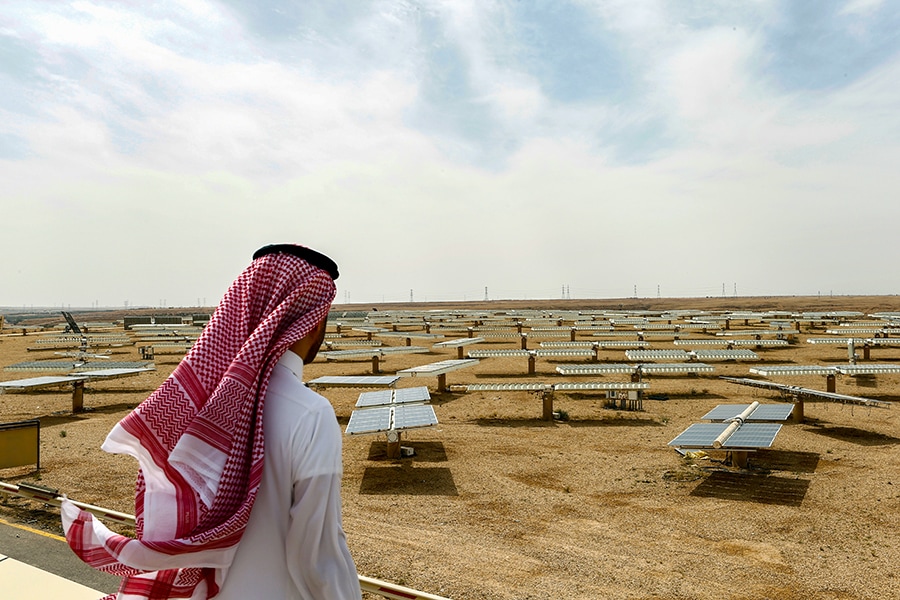
Scientists grow spinach in the desert thanks to these new solar panels
Scientists in Saudi Arabia have developed their method using photovoltaic solar panels and a hydrogel, which allows water to be drawn from the air for use while also generating electricity
Image: Faisal Al Nasser / Reuters Scientists in Saudi Arabia have developed solar panels that absorb water vapor from ambient air. This has been used to grow spinach in the middle of the desert.
Scientists in Saudi Arabia have developed solar panels that absorb water vapor from ambient air. This has been used to grow spinach in the middle of the desert.
The scientists developed their method using photovoltaic solar panels and a hydrogel, which allows water to be drawn from the air for use while also generating electricity. The study, published in the journal Cell Reports Physical Science, describes a sustainable and low-cost strategy that could improve food and water security for people living in regions with dry climates.
"A fraction of the world's population still doesn't have access to clean water or green power, and many of them live in rural areas with arid or semi-arid climate," says senior author Peng Wang, a professor of environmental science and engineering at the King Abdullah University of Science and Technology (KAUST), Saudi Arabia.
Called WEC2P, the device is composed of a solar photovoltaic panel placed atop a layer of hydrogel, which is mounted on top of a large metal box to condense and collect water. "Our design makes water out of air using clean energy that would've been wasted and is suitable for decentralized, small-scale farms in remote places like deserts and oceanic islands," explains Professor Wang.
The hydrogel increases the efficiency of photovoltaic solar panels by up to 9% by absorbing heat and lowering the temperature of the panels, says the research. This kind of system could be used to light homes as well as to water agricultural crops.







